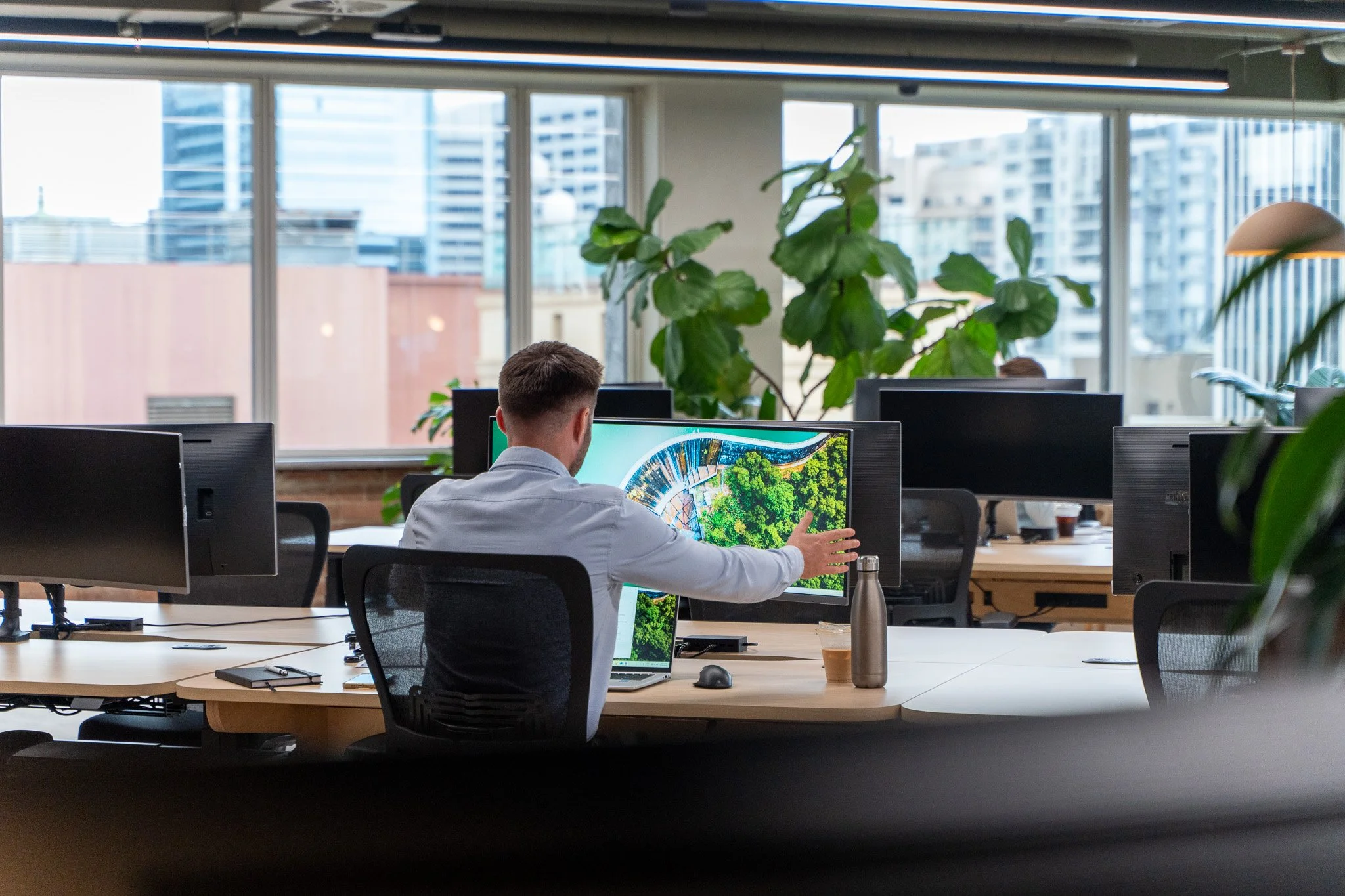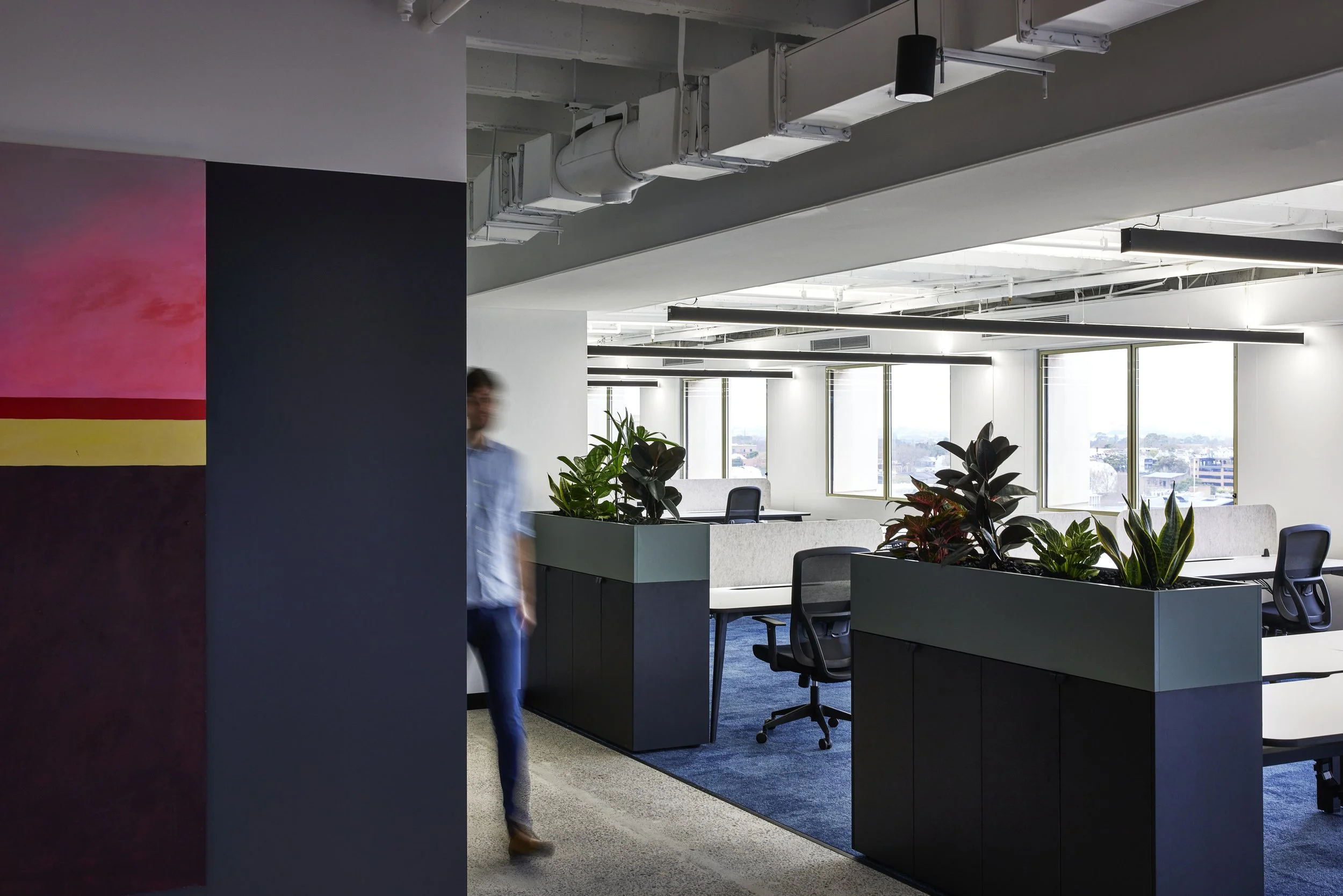Hot Desking in Decline: Why Employees Want More Than Just a Desk
The Rise and Retreat of Hot Desking
When hot desking entered the workplace scene in the early 2000s, it was seen as a forward-thinking response to rising commercial rents and growing demands for flexibility. By removing assigned seating, companies aimed to maximise real estate, encourage agile work practices, and foster informal collaboration. With the rise of hybrid and remote work post-pandemic, it appeared to be an obvious next step.
But in practice, the cracks have started to show. Both globally and in Australia, organisations are rethinking the model. What once symbolised innovation is now being questioned for its impact on employee well-being, team cohesion, and performance. According to a 2023 global review by Korn Ferry of 24 workplace studies, hot desking is consistently linked with lower job satisfaction and weakened perceptions of workplace quality.
Australian data paints a similar picture. The Property Council of Australia reports growing office occupancy rates in CBDs post-COVID, but returning employees are voicing dissatisfaction with hot desking. Many feel it no longer supports how they work, connect, or feel at ease in their workplace.
The Need for Place
Hot desking runs counter to a basic human instinct: the need for territory.
From early psychological research to everyday experience, our need to claim space is well documented, but its role in shaping how we live, and more specifically how we work, is becoming harder to ignore.
As early as 1969, psychologist Robert Sommer observed how people in shared spaces establish temporary ownership. Even in public places like cafés, libraries and airports people instinctively mark territory. A bag on a chair, a jacket slung over the backrest, a coffee cup left on the table. These are small, quiet signals: “This is mine. I belong here.”
Step into today’s office, and that same fundamental need hasn’t gone away; it’s just being challenged in new ways. A 2022 study by Frankó et al. found that the shift to hot desking significantly diminished feelings of territorial behaviour and place attachment—even for hybrid workers. Similarly, A 2024 Forbes survey of more than 600 global workers found that employees without assigned desks described their environment as impersonal, disorienting, and mentally fatiguing.
Australian sentiment is similar, with some reports indicating that over 50% of hot-desking employees feel anxious about finding a desk, and nearly a quarter spend up to 30 minutes a day setting up.
Productivity and Cultural Friction
Operationally, hot desking can come at a cost. Globally, employees lose an average of 18 minutes per day simply searching for a desk, according to HR Daily Advisor. In Australia, where layouts and tech support vary widely, this figure can be higher. Time is also lost setting up monitors, reconnecting accessories, and logging in to unfamiliar systems.
Beyond time, there are cultural implications. When employees don’t know where their colleagues are seated or if they’ll be near anyone familiar, informal mentoring, collaboration, and daily social interactions begin to erode. Ironically, the system designed to spark interaction often leads to isolation. A 2024 scoping review by La Trobe University found that hot desking in Australian workplaces contributed to lower morale, increased distractions, and reduced communication between teams. As one participant described: “It feels like a hotel lobby, not a workplace.”
We are creatures of habit. And despite all the promised flexibility, the desire for consistency remains strong. Without it, modern workplaces can often feel uninspiring, disconnected and, most worryingly of all, stressful.
The Australian Reality
Locally, organisations are shifting away from full-scale hot desking toward more stable, hybrid desk models. According to CBRE’s Pacific Workplace Survey 2024, 64% of Australian companies are investing in better booking systems, team zones, and hybrid policies to balance flexibility with familiarity.
In response to employee feedback, firms are introducing semi-permanent work points, consistent neighbourhoods, and "anchor desks" for individuals or teams. This isn’t a return to rigid seating plans, but rather a refinement, an effort to retain flexibility without sacrificing certainty.
We are creatures of habit. And despite all the promised flexibility, the desire for consistency remains strong. Without it, it’s becoming increasingly evident that modern workplaces can often feel uninspiring, disconnected and most worryingly of all, stressful.
Global Course Correction
Internationally, major companies are also retreating from full hot desking. Salesforce has reinstated assigned desks in key departments. Google and Amazon have shifted to zoned seating, offering consistency without reverting to fixed desks.
A 2025 Twilio–LinkedIn survey found that 89% of workplace leaders believe some degree of desk personalisation is essential to performance. Especially in roles demanding deep focus or emotional regulation, a consistent workspace supports psychological safety and productivity.
Smarter Alternatives: The Rise of Semi-Personalised Flexibility
In both global and Australian settings, a clear pattern is emerging: companies are adopting flexible models that restore some level of ownership and predictability. Five key strategies are leading this shift:
Semi-Owned Zones: Employees are provided lockers, drawers, or regular access to preferred desks. Booking systems allow longer reservations or weekly defaults. Tools like MS Places and OfficeMaps cater to this need.
Activity-Based Work Settings: Workspaces are tailored to different tasks, from quiet booths to team pods. Gensler’s Asia-Pacific Workplace Survey (2023) found a 25% increase in satisfaction when employees could select from a variety of settings.
Smart Technology: Platforms like Envoy, Skedda, and Robin support real-time availability, ergonomics preferences, and team-based booking. Some systems nudge users toward familiar spots or flag nearby teammates, making the space feel more connected.
Ergonomics and WHS Compliance Australian WHS regulations require consistent setups for workers with injuries or risks. Hot desking complicates this. To mitigate issues like RSI or back pain, some companies now offer adjustable kits or assign ergonomic pods for high-risk users.
Communication and Cultural Framing Resistance often stems from poor implementation, not the model itself. A 2024 Spacewell survey found that 70% of employees were more open to desk sharing when they understood the reasons behind it. When communicated effectively and supported with onboarding, tech tools, and team rituals, flexible models become more accepted.
The Desk as Anchor
The modern workplace is fluid, hybrid, and always evolving. But amid the movement, people still seek anchors: spaces of comfort, predictability, and identity. A desk, a team zone, or a personalised setup does more than support productivity. It signals that someone belongs.
Hot desking was meant to optimise space. But to truly optimise performance, companies must also consider emotion, connection, and routine. As the world reimagine work, the aim should not be to return to old models, but to build environments that balance movement with meaning.
For workplace designers, corporate decision-makers, and people and culture leaders, the opportunity is clear: create spaces that offer flexibility without forgetting the human need for place.
References
· CBRE. (2024). Pacific Workplace Survey 2024. CBRE. https://www.cbre.com.au
· Forbes. (2024). Global workplace trends survey 2024. Forbes Media LLC. https://www.forbes.com
· Gensler. (2023). Asia-Pacific Workplace Survey 2023. Gensler. https://www.gensler.com/research-insight
· HR Daily Advisor. (n.d.). How hot desking impacts employee productivity. HR Daily Advisor. https://hrdailyadvisor.blr.com
· HRM Online. (2023, July). Why hot desking might be doing more harm than good. HRM Online. https://www.hrmonline.com.au
· Korn Ferry. (2023). Global workplace satisfaction review: 24-study analysis. Korn Ferry. https://www.kornferry.com
· La Trobe University. (2024). Hot Desking in Australia: A Scoping Review. La Trobe University School of Psychology.
· Property Council of Australia. (2023). Office Occupancy Data: Post-COVID trends. https://www.propertycouncil.com.au
. Anderson, R. (2024, December 6). Hot-Desking or Hot Mess? Tips to Avoid Shared Desk Pitfalls. Forbes.
· Robert Sommer. (1969). Personal Space: The Behavioral Basis of Design. Prentice Hall.
. Frankó, L., Erdélyi, A., & Dúll, A. (2023). Transformation of the office: Territorial behaviour and place attachment in shared desk design.
Journal of Corporate Real Estate, 25(3), 229–245. Emerald Publishing.
· Spacewell. (2024). Global Employee Sentiment Survey: Flexible Workplace Models. Spacewell. https://www.spacewell.com
· Twilio & LinkedIn. (2025). Workplace Futures Survey 2025: The Role of Personalisation in Desk Use. Twilio & LinkedIn.
· MS Places. (n.d.). Hybrid workplace management tools. Microsoft. https://www.microsoft.com/en-us/microsoft-teams/ms-places
· OfficeMaps. (n.d.). Workplace mapping and booking platform. https://www.officemaps.com
· Envoy. (n.d.). Smart workplace platform. https://envoy.com
· Skedda. (n.d.). Desk booking software for hybrid workplaces. https://www.skedda.com
· Robin. (n.d.). Office scheduling software for hybrid teams. https://robinpowered.com













